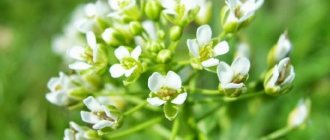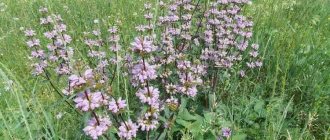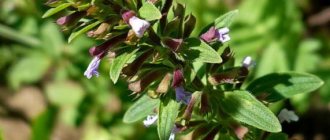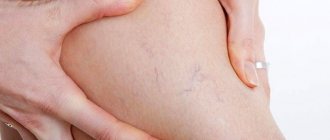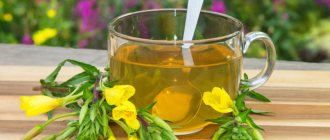Short description
Hernia is a herbaceous plant from the Clove family, which reaches a length of 15 cm. Ostudnik has numerous branched recumbent stems and weakly branched roots. It is endowed with small, elliptical and opposite leaves. Its seeds are lens-shaped, shiny, smooth, and have a dark brown tint. The medicinal herb hernia differs from other plants in its yellowish-green flowers collected in balls.
The plant is harvested in the summer. Burnet blooms from April to August, the fruits ripen, as a rule, at the end of June. It is recommended to dry the collected raw materials in a special device (electric dryer) or a shaded place, then place it in a glass jar and close it tightly. Store hernia in a dry and cool place for no more than two years.
But where does hernia grass grow? Its habitats are forest edges, sandy and dry soil, wastelands, roadsides. The habitat of this plant covers Central Europe, Western Siberia, Africa and Asia.
Growing hernia in the garden
Hernia glabra and other varieties of the plant can be grown in the garden from seeds. Seed material is collected from wild bushes or purchased from the horticultural department. The area for planting the plant should be drained, with a good level of lighting or with slight shading.
The crop is grown on nutritious soil or sandy soils. Planting hernia grass on saline lands is not recommended. Dense clay soils need to be supplemented with river sand to improve drainage characteristics. For 1-2 sq. m of soil add 1 bucket of sand.
The seeds of the plant are sown in the soil before winter, and the plantings are sprinkled with soil. The seed material undergoes hardening and will germinate in the spring. Shoots appear in May-June. Side shoots begin to appear on seedlings in July. In the first year of planting, the hernia needs to be watered regularly for rapid, stable growth. Subsequently, seasonal rainfall will be sufficient for the drought-resistant crop. Excessive watering is not recommended, as stagnation of water in the roots will cause the plant to deteriorate.
The plant crop does not need abundant fertilizing. It is enough to add liquid organic fertilizer (mullein, bird droppings) to the soil once a season. The culture is winter-hardy, so the bushes are not covered for the winter. The hernia plant is resistant to insect pests and diseases.
You can buy hernial at a pharmacy or prepare it yourself
Collection and procurement of raw materials
The grass is collected during the flowering period (June-August). The stems are cut using a garden knife and cleared of debris and sand. The roots and flowers are not used for medicinal purposes. Plant materials are dried on cardboard in the fresh air in the absence of rain. You can place the herb in a ventilated area.
To prevent mold, you need to turn the grass over. Dried raw materials are placed in paper bags, cardboard boxes or fabric bags. You can place the dried herb in glass jars. Packages are stored in a dry place. The shelf life of harvested raw materials is 2 years.
Useful substances in burnet
The herb contains a large number of valuable components. Without them, it is difficult to cope with some pathologies. The hernia contains many different ingredients:
- essential oil;
- organic acids;
- tannins;
- vitamins PP, A and C;
- saponin-like glycoside herniarin;
- flavonoids;
- alkaloid paroniquin;
- gerianic acid;
- coumarins;
- etherumbelliferone.
This plant is considered very valuable in folk medicine. It helps get rid of various diseases without causing harm to the body through side effects. The herb herb can be used to treat many health problems.
Beneficial features
The plant is widely used in folk medicine (internally in the form of freshly squeezed juice and decoctions/infusions and externally in the form of poultices).
Hernia infusions and decoctions have a pleasant aroma and a somewhat astringent taste with a mucous sensation. They are drunk for cystitis, acute pain and spasms in the bladder, as a prophylactic for urolithiasis, as a diuretic for high blood pressure and swelling; less often – with bronchitis and other inflammatory processes of the upper respiratory tract.
You can drink hernia tea to prevent thrombosis.
For scrofula, diathesis and acne, it is recommended to wash your face with hernia decoctions. In addition, the infusion is considered a good wound healing agent. In the treatment of hernias, joint inflammation, arthritis, and gout, poultices made from steamed herbs are used.
Freshly squeezed juice is used externally for psoriasis to treat plaques. It can be drunk for the same purposes as a decoction of the plant. It is not recommended to store the juice, as it very quickly loses its beneficial properties.
Hernia is not recognized as a pharmacopoeial plant in official Russian medicine, but is registered in the state register of medicines as a homeopathic drug. The plant is also included in some dietary supplements.
In official Western medicine, hernia is used more widely. In particular, it is part of the drug Fitolysin.
In the German Pharmacopoeia, the herb in the form of a decoction or infusion is used in the treatment of chronic cystitis and various diseases of the liver and kidneys, as well as syphilis.
Article on the topic: Snowberry: planting and care, cutting and propagation, photo
Plant varieties
The following types of hernia have healing properties: fragrant, smooth and hairy. In the first case, the grass has a specific smell. Polygamy hernia contains a lot of coumarin. This component improves blood circulation, thereby preventing the occurrence of blood clots. This plant has astringent, analgesic and diuretic effects on the body.
The smooth hernia has bare stems, and its inflorescences have medicinal properties. It is for this reason that it is recommended to make decoctions during flowering. This type of herb helps stop inflammation in the prostate gland. The naked hernia helps relieve discomfort in the rectum and bladder. After taking it, the process of urination is normalized.
In addition, ostudnik has a positive effect on the condition of the skin, making it healthier, more elastic and smooth. All wounds immediately heal after treatment with a hernial hernia, and with diathesis the itching disappears. To improve the condition of pets' fur, some owners add crushed hernia stems to their pet's bathing water. After such procedures, the hair becomes silky and soft.
Hernia herb: medicinal properties
This plant is known to have medicinal properties and is therefore added to many homeopathic herbal infusions. Burnet is used to treat various diseases. It is recommended to use hernia for cystitis and pyelonephritis.
The plant is used to prevent the formation of kidney stones. It successfully eliminates dropsy and gout, as it has a diuretic effect and relieves inflammation in the urinary tract. Hernia herb, a photo of which is presented in the article, is used for arrhythmia and heart failure. The plant quickly restores muscle tone after grueling physical activity. Dog soap also copes with pain in the gastrointestinal tract.
Hernia herb, the medicinal properties of which have been known since ancient times, is used for pathologies of the upper respiratory tract. The plant is also used externally as baths and lotions for diathesis, skin diseases and abrasions. Medicines made from it, in addition to the diuretic effect, have antibacterial, astringent and antispasmodic properties.
Hernial - contraindications
Herniarin and herniaric acid contained in hernia raw materials have a strong hemolytic effect, that is, they destroy red blood cells, therefore, hernia preparations can be used for treatment only as directed and under the supervision of a professional doctor. An overdose can cause poisoning and even paralysis of the central nervous system.
Hernia preparations are contraindicated for pregnant women, breastfeeding women, children under 12 years of age, patients with glomerulonephritis, acute gastritis, gastric and duodenal ulcers. Contraindications are also a tendency to bleeding and the presence of tumors in the genitourinary organs. Patients with kidney stones can take hernial medications only if there are no large stones, otherwise the stones may get stuck in the ureter and urgent surgery will be required.
Recipes with hernia
This plant has many useful qualities, among which the leading positions are occupied by anti-edematous, analgesic and anti-inflammatory properties. It is actively used to eliminate various types of hernias.
It is customary to make poultices from this herb. For such purposes, take fresh stems and steam them in hot water. Then they are applied to the sore area on the body and secured with a bandage. The bandage must be kept for 30 minutes, then the plant is replaced with a fresh one. The duration of the procedure should be at least 3 hours.
An infusion based on hernia is made in the following way: 20 grams of raw material are added to 500 ml of boiling water and left to brew for several hours. You need to consume it in the morning, at lunch and in the evening, 50 ml.
Traditional healers often resort to treatment with lotions. Hernia is a hernia herb that is effective in the early stages of the disease. The plant is used as a medicinal procedure. Therapy with lotions helps relieve pain. In addition, such treatment promotes resorption of the hernia. To prepare a healing remedy, you need to prepare:
- fresh finely chopped hernia mushroom about 100 grams;
- 500 ml kefir;
- 12 tablespoons of turpentine;
- 1 kg of flour.
The listed ingredients are thoroughly mixed. The result should be a thick dough, which is used as a medicinal lotion. It is subsequently distributed throughout the spinal column, starting from the neck to the tailbone. A plastic film or paper napkin is placed on top of the compress to obtain a warming effect. You need to keep the dough on your body for at least two hours. It is advisable to carry out this procedure in the evening a few hours before bedtime. It is recommended to apply a medicinal lotion once every 2 days until the condition improves.
To eliminate trophic ulcers, in addition to hernia, other medicinal plants are used:
- calamus;
- avens;
- hazel;
- wild rosemary;
- sage;
- oregano;
- rose petals and raspberry leaves.
They are added to 300 ml of boiling water and infused for three hours. You need to use the product regularly, 100 ml in the morning, afternoon and evening. The duration of treatment is 2.5 months.
Freshly squeezed burnet juice is taken orally for skin diseases and hernias. But before drinking this liquid, it is diluted with water. For therapeutic purposes, drink 20 ml of juice three times a day. A hernia scalded with boiling water should be applied to problem areas on the dermis.
Botanical description of hernia
Hernia is a herbaceous perennial plant belonging to the genus Hernia, the Carnation family, reaching a length of fifteen centimeters. Burnet is endowed with weakly branched rhizomes and numerous branched recumbent stems. The leaves of the plant are numerous, small, opposite, elliptical. The hernia plant is endowed with small yellowish-green flowers collected in balls. Burnet fruits are indehiscent nuts with dark brown lens-shaped seeds.
It blooms in mid-spring, and the fruits ripen in early summer. Dry, sandy soil, wastelands, forest edges, roadsides are places of growth. Western Siberia, Central Europe, Asia, Africa - habitat.
Collection, procurement of raw materials
The above-ground part of the plant, the herb, is used to prepare medicines. It is recommended to collect it during intensive flowering. Since the branches of the plant are spread out, they can only be collected with your hands.
The stems are cut with a knife, then thoroughly cleaned of sand and debris. Next, the raw materials need to be dried. The grass is either laid out on cardboard and dried in the fresh air in the shade, or dried in a room with good ventilation. To prevent the grass from becoming moldy or rotting, it is necessary to turn it over periodically.
Article on the topic: Eustoma: planting and care in the open ground and at home
The blanks are placed in paper bags or sacks, cardboard boxes, and then stored in a dry place. The raw materials can be stored and used for two years.
Rhizomes and flowers are practically not used for medicinal purposes. Often, freshly squeezed plant juice is used to treat ailments.
Medicinal properties, composition
The herb has quite a wide range of uses in medicine. This is due to its rich composition, as well as a lot of healing properties. Burnet is endowed with the following substances:
- carotene;
- essential oils;
- ascorbic acid;
- saponins;
- glycosides;
- tannins;
- glucose, rhamnose, galactose;
- coumarins;
- alkaloids;
- flavonoids;
- routine.
Thanks to numerous studies, the following properties of the plant are known: immunostimulating, restorative, analgesic, astringent, antibacterial, antispasmodic, wound healing, diuretic, anti-inflammatory.
The use of plant-based formulations will help in: normalizing the functioning of the cardiovascular system, improving the functioning of the gastrointestinal tract, normalizing metabolic processes, strengthening the immune system, combating inflammatory processes, minimizing pain, spasms, restoring muscle tone.
Hernia is effective in the fight against: hernias, urolithiasis, cystitis, arthritis, gout, psoriasis, pyelonephritis, prostatitis, dropsy, dysentery, stomach ulcers, diarrhea, hemorrhoids.
Use in folk medicine: recipes
The genus Hernia includes more than thirty species of different perennials and annuals. Only three have healing properties: hernia glabrous, fragrant, and hairy. The medicinal properties of the varieties are the same. They have pronounced diuretic, anti-inflammatory, analgesic, astringent, and choleretic properties.
The plant is not used in traditional medicine; it is not classified as a pharmacopoeial plant. However, burnet is registered in the state register of medicinal products as a homeopathic drug. The plant is included in many dietary supplements.
In the collection of alternative medicine there are many recipes for medicines based on hernia. They will help in the treatment of pathology, as they are highly effective and also harmless. The main thing is to observe the proportions, dosages, and also the frequency of use.
In the fight against arthritis and urinary incontinence, it is recommended to use this infusion. Grind a teaspoon of herb in a mortar, then pour in 200 ml of boiled water. Place the container in a warm place for two hours. Drink 50 ml of filtered drink four times a day.- People suffering from skin pathologies, in particular psoriasis, benefit from taking medicinal baths. Steam a tablespoon of hernia with boiling water - 300 ml. Leave in a warm place for a quarter of an hour. Add the infusion to your bath. The duration of water procedures is a quarter of an hour.
- The juice of the plant will help in the fight against hernias, as well as skin ailments. You need to drink 20 ml of freshly squeezed juice three times a day. It is recommended to apply herbs scalded with boiled water to problem areas of the skin.
- An infusion can be used to treat cystitis. Brew 10 g of the dried above-ground part of the plant with boiling water - 300 ml. After half an hour, filter, consume 10 ml of the drug four times a day, half an hour before meals.
- Hernia is also used to make tea, which has diuretic properties. 20 g of dried herb is steamed with boiling water - 200 ml. The composition is set aside in a warm place for two hours. Take 20 ml of medication two to three times a day.
- This collection will help in the fight against trophic ulcers. Mix in equal proportions the roots of the burnet with gravilat, calamus, wild rosemary, watch, hazel, sage, string, oregano, kidneyweed, raspberry leaves, rose petals. Steam 30 g of the mixture with boiled water - 300 ml. Set the container aside for three hours. Drink 100 ml of the drink three times a day. The duration of the course of therapy is two and a half months.
This product can be used for external use. Combine the hernia herb in equal proportions with St. John's wort, lemon balm, primrose, agrimony, string, dubrovnik, poplar buds, birch leaves, burdock rhizomes, and knotweed. Steam 2 tablespoons of the collection with boiling water - 500 ml. Let it brew for an hour. Use to clean wounds. The duration of the therapeutic course is one month.
- For pyoderma, it is recommended to use this composition to treat the skin. Mix 10 g of hernia with bindweed, gravel, cornflower, linden, oat straw, sage leaves - the same amount. Steam the raw materials - 2 tbsp. spoons in 300 ml of boiling water. After an hour, filter and use to treat problem areas.
- For the treatment of chronic diarrhea, you can use this remedy. Mix burnet with Icelandic moss, dubrovnik, lovage, shepherd's purse, bedstraw, thyme, and wheatgrass in equal proportions. Brew 30 g of the mixture with boiling water - 300 ml. Drink 50 ml of infused, filtered drink three times a day. The duration of the therapeutic course is 90 days.
- Microenemas will help in the fight against hemorrhoids. Mix hernia with wheatgrass, willow bark, calendula, sea buckthorn, horsetail, oregano, and knotweed. 30 g of the mixture is brewed in 200 ml of boiling water. For an enema, use 0.15 liters of infusion. The procedure is carried out once a day, for a month.
Contraindications
The plant is poisonous, so it should be used for medicinal purposes with the utmost caution. It is important to adhere to the proportions when preparing medications, as well as dosages and frequency of medications. Abuse of compounds can cause poisoning. The appearance of malaise, nausea, vomiting, abdominal pain, dizziness signals an overdose. In this case, you need to stop taking the composition, rinse your stomach, take a sorbent, and see a doctor.
The use of medications is not recommended for women during pregnancy and breastfeeding. You should not take the formulations if you have an individual intolerance, or give them to small children.
Sources:
https://floristics.info/ru/stati/sadovodstvo/5306-gryzhnik-svojstva-i-protivopokazaniya-posadka-i-ukhod.html https://www.neboleem.net/gryzhnik.php https://narodnymisredstvami. ru/gryizhnik/
Hernia herb: use for cystitis
In 250 ml of hot water you need to add 10-15 grams of dry raw materials. For similar purposes, you can use hairy or naked hernia; they have identical properties. The mixture is left to cool for several hours, after which it is strained. Drink the resulting drink one tablespoon at least 3-5 times a day before each snack.
This healing decoction helps get rid of cystitis, including chronic cystitis. It can also be taken for other pathologies of the genitourinary system.
In the fight against chronic diarrhea, a decoction of hernia, lovage, dubrovnik, Icelandic moss, bedstraw, shepherd's purse, wheatgrass and thyme is used. Brew a few tablespoons of the mixture with a glass of boiling water. After infusion and filtering, the liquid is taken 50 ml 2 times a day for three months.
Relieving pain from renal colic
Hernia herb is a reliable assistant for kidney problems. A decoction of this plant is useful to use during attacks. It’s not difficult to make: 30 grams of crushed raw materials are poured with cold water, put on fire until it boils and left for about 10 minutes. The mixture must be filtered while warm, otherwise the active components will precipitate. The entire infusion should be drunk in 2-3 doses.
External use of hernial
To wash abrasions and wounds, use a product based on burnet with the addition of St. John's wort, agrimony, primrose, lemon balm, poplar buds, dubrovnik, string, burdock roots, knotweed and birch leaves. These herbs are mixed in equal proportions. Then 50 grams of the resulting mixture is added to 500 ml of boiling water. The cooled mixture is used to treat damaged areas of the skin. Such procedures are allowed to be carried out for no more than 1 month.
In addition, hernial is used as microenemas for hemorrhoids. To do this, the plant is mixed with horsetail, knotweed, calendula, willow bark and sea buckthorn. Add 30 grams of herbal mixture to 200 ml of hot water and let it brew for 30 minutes. For an enema, use 150 ml of decoction. The procedure is performed once a day. The duration of therapy is 1 month.
Side effects and contraindications
This herb is poisonous, therefore, despite its healing properties, it must be used carefully. When preparing decoctions and infusions from this plant, it is imperative to adhere to the proportions. Do not exceed the prescribed dosage when treating with a hernial hernia. Abuse of drugs based on it can lead to poisoning. The following symptoms indicate an overdose:
- severe abdominal pain;
- nausea;
- dizziness;
- gagging.
In this case, you must immediately stop using the decoction, rinse your stomach, and then take activated charcoal. Then you should see a doctor.
You should not use hernia-based medications during breastfeeding or pregnancy. They are also not recommended for use if you have an individual intolerance.
Contraindications
When practicing healing manipulations using hernia, to eliminate potential harm to health, the toxicity of this plant and existing contraindications are taken into account:
- kidney stone disease;
- individual intolerance;
- recovery period after a serious illness or surgery.
The use of products based on this plant is prohibited during pregnancy, lactating women, and children under the age of 12 years.
With careful attention to the recommended treatment methods, the hernia can effectively alleviate the condition of a variety of pathologies.
This plant has acquired particular value due to its ability to reduce pain and relieve inflammation in various types of hernia.
It is important not to exceed the proportions of the components and begin treatment only after consulting a doctor.





